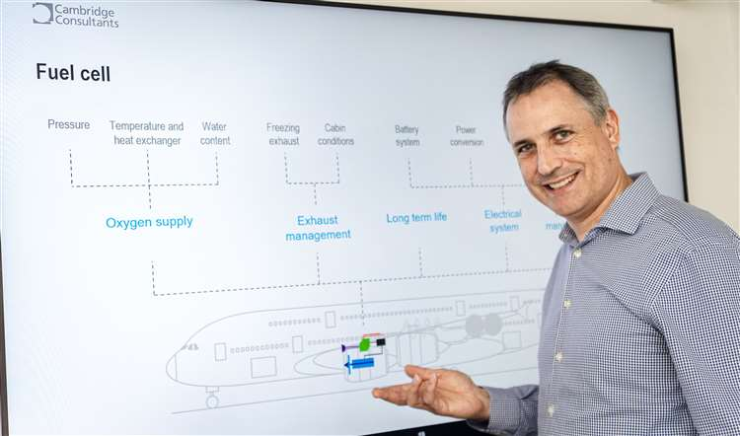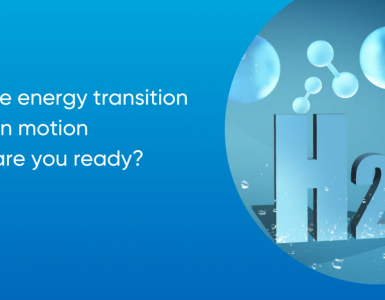Hydrogen heating isn’t a viable climate crisis solution, says Cambridge innovation specialist.
Silicon is one such material: it has spawned an industry that has changed information, communication and is now changing energy – photovoltaic arrays are the nearest thing to a silver bullet we have. Lithium (and related materials in batteries) is another.
Our ability to manipulate materials at a molecular level will open up enormous opportunities. Polymers like polyamide (or PTFE) used to produce semi-permeable membranes give us another class of materials of vital importance, and I have a side-bet on graphene here.
But the reality is that, by the middle of this century, we’re going to need to be able to desalinate water on a previously unimagined scale. Fossil water – the ancient water stored in the underground aquifers that is extracted to irrigate the fields that produce our food – is running out.
🔥 What about we co-host a webinar? Let's educate, captivate, and convert the hydrogen economy!
Hydrogen Central is the global go-to online magazine for the hydrogen economy, we can help you host impactful webinars that become a global reference on your topic and are an evergreen source of leads. Click here to request more details
When the dust-bowl years struck in the US nearly a century ago, the technology that rescued agriculture was the centre-pivot irrigator.
Gasoline-powered pumps drew water up from underground and turned the deserts green again in massive circular fields. The water tables are not inexhaustible though; the water there fell as rain hundreds of thousands of years ago, and is not being replaced. Water tables are falling at a rate of around 3m per year in most of the big arable regions.
Farmers are chasing the water levels downwards – drilling a kilometre down in some cases. The water that comes up from hundreds of metres underground is increasing in salinity and decreasing in quantity.
Desalinated seawater is already being used for irrigation in the Middle East, and this trend will spread. Graphene could – perhaps – be used there for the membranes to filter out the salt from seawater. If it can be manufactured in quantity and quality then it means thinner membranes with lower pressure requirements.
That will radically lower the energy requirement and make it affordable for the irrigation of high-value crops in controlled-environment agricultural settings.
If that can be halved – or better – then we’ll see it spread, possibly even to commodity crops in open fields with drip irrigation (centre-pivots are cheap in capital expenditure terms, but wasteful in terms of evaporation losses). We’re therefore going to see photovoltaic solar energy used for reverse osmosis on a massive scale.
Solar energy is cheap and plentiful – it’s as near infinite a resource as makes no difference, if it can just be scaled quickly enough. That leaves us with hydrogen.
Hydrogen is made from natural gas (methane). Natural gas itself is roughly as bad as coal in its climate change impact.
This is because so much methane leaks out during exploration, extraction, distribution and use, and methane has a GWP (global warming potential) of 28 over a 10 year measure, which is all we have as a horizon for action (carbon dioxide has a GWP of 1, nitrous oxide is 310).
When the carbon is then removed from the methane to make hydrogen (steam reforming), still more energy is consumed, and the CO2 is vented to the atmosphere. The result is that hydrogen has a higher GWP than natural gas. Thanks for staying up to date with Hydrogen Central.
The prime current application for hydrogen is oil refining – it is used to terminate the molecular ends and stop them fraying when you take long-chain molecules (like bitumen from tar sands or heavy crude) and divide them up into shorter lengths like gasoline or kerosene.
Other large (existing) uses for hydrogen are ammonia production for agriculture and as a chemical feedstock. Switching ammonia production to lower-carbon hydrogen would have a big impact on oil use.
Now, it is possible to make hydrogen by electrolysing water (green hydrogen). Saudi Arabia is spending billions doing this: the Australians seem keen too. Whenever people talk about hydrogen being a solution they are generally imagining a future in which green hydrogen is plentiful and cheap. Those days may come, but current production volumes are miniscule – a drop in the ocean of current black hydrogen production. The priority for green hydrogen should be to reduce the carbon intensity of oil refining (I accept this is counter-intuitive).
Long-range air travel could also use green hydrogen – I don’t see any other viable long-term alternative. However, the problem remains that combustion at high altitude is a bad idea, when it’s done at volume. The sad reality is that, ultimately, air travel needs to reduce by a lot.
Hydrogen is also being considered for heating, but I am increasingly of the view that hydrogen shouldn’t be used for this purpose. The best case is that it works and can be used for something more valuable – so why not attack that market first? The worst case is that the noise associated with it acts to delay electrification which, accompanied by insulation and draught exclusion, is the actual answer to heating.
Don’t get me wrong – I like hydrogen. Hydrogen is a really little molecule with enormous internal energy, which is why it’s good for getting a Zeppelin off the ground. Unfortunately, this same activity makes it hard to keep it in your Zeppelin – it leaks out through any seal or membrane. Even if you can solve the leaks, you’re still left with hydrogen being a second-rate fuel. Its internal energy makes it big – high volume – compared to its calorific value. You waste a lot (sometimes as much as half) of the energy compressing it and transporting it, compared to the amount you get back if you just burn it.
But in terms of home boilers, you might manage to get up to a 20 per cent hydrogen/80 per cent natural gas ratio without losing too much in leaks, pressure drops etc – but it’ll never be 100 per cent. The combustion engineers I’ve spoken to all hate burning hydrogen. The flame is invisible, which makes it dangerous. It doesn’t radiate much heat either, so you don’t feel it’s hot until your hand is actually in the flame…and then it’s super-hot and horrible.
Replacing 20 per cent of your gas from a material with a higher GWP than the natural gas you’re replacing doesn’t make sense: hydrogen is not a solution for climate change. It’s a massive decarbonisation problem first and foremost, and will continue to be so for a long time. We need to be piling investment into eliminating CO2 emissions from hydrogen production before we can start using hydrogen to decarbonise other industries.
When it comes to domestic heating, start with better insulation, then heat pumps. Where there isn’t room for an individual heat pump, I’m very much in favour of heat networks. A colleague is helping to build a district heat network in my old village (Swaffham Prior)… quite brilliant I think.
My principal objection to hydrogen is that it is being used by bad faith actors in the fossil fuel industry as a bait and switch. This sounds paranoid – but remember that these are the people who have spent the last 30 years denying the reality of climate change. To see these same people now describe hydrogen (made from fossil fuels, remember) as a solution should make anyone suspicious.
READ the latest news shaping the hydrogen market at Hydrogen Central
Hydrogen heating isn’t a viable climate crisis solution, says Cambridge innovation specialist, March 19, 2022








